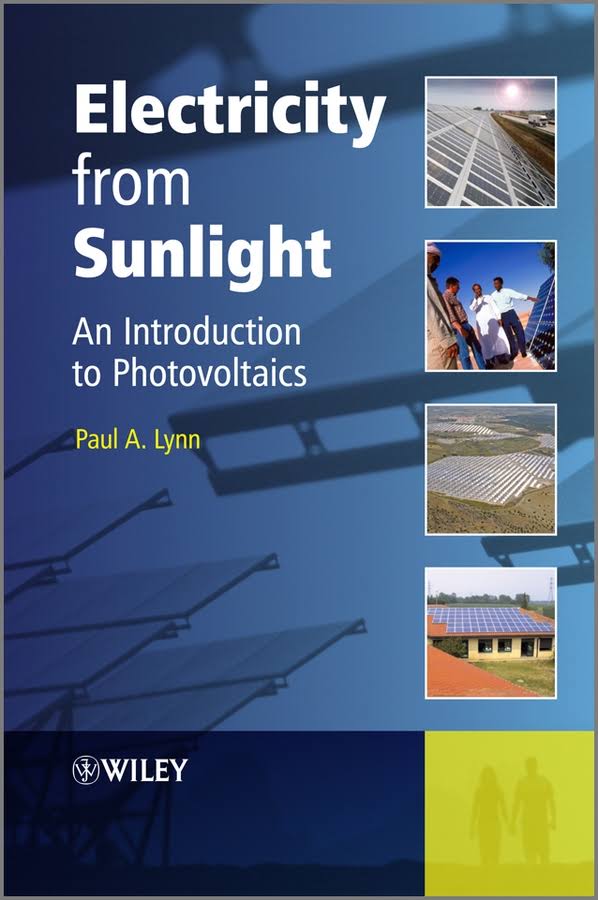
단행본
Electricity from sunlight: an introduction to photovoltaics
- 발행사항
- Chichester : Wiley, 2010
- 형태사항
- xvi, 221 p. : col. ill., col. maps ; 24 cm
- 서지주기
- Includes bibliographical references and index
책 소개
This book covers areas including:
a brief history of PV, and the current international scene;
the scientific principles of solar cells including silicon and new thin-film varieties;
PV modules and arrays;
grid-connected PV, from home systems up to large power plants;
the wide diversity of stand-alone PV systems, and;
the economic and environmental aspects of solar electricity.
Key equations and numerical examples are fully discussed, providing essential theoretical background. The text is supported by copious illustrations and more than eighty inspiring full colour photographs from around the world to demonstrate PV’s huge range of practical applications.
This book is aimed at a wide readership including professionals working in related areas, and students taking introductory courses in PV and renewable energy. Its style and level will also appeal to energy planners and decision makers, members of environmental organisations, and the increasing number of people interested in generating their own electricity from sunlight.
목차
About the Author.
Preface.
Acknowledgements.
1. Introduction.
1.1 The Sun, Earth, and Renewable Energy.
1.2 The Solar Resource.
1.3 The Magic of Photovoltaics.
1.4 A Piece of History.
1.5 Coming up to Date.
References.
2. Solar Cells.
2.1 Setting the Scene.
2.2 Crystalline Silicon.
2.2.1 The Ideal Crystal.
2.2.2 The p–n Junction.
2.2.3 Monocrystalline Silicon.
2.2.3.1 Photons in Action.
2.2.3.2 Generating Power.
2.2.3.3 Sunlight, Silicon, and Quantum Mechanics.
2.2.3.4 Refi ning the Design.
2.2.4 Multicrystalline Silicon.
2.3 Amorphous and Thin-fi lm Silicon.
2.4 Other Cells and Materials.
2.4.1 Copper Indium Diselenide (CIS).
2.4.2 Cadmium Telluride (CdTe).
2.4.3 Specialised and Innovative Cells.
2.4.3.1 Gallium Arsenide (GaAs).
2.4.3.2 Dye-sensitised Cells.
References.
3. PV Modules and Arrays.
3.1 Introductory.
3.2 Electrical Performance.
3.2.1 Connecting Cells and Modules.
3.2.2 Module Parameters.
3.3 Capturing Sunlight.
3.3.1 Sunshine and Shadow.
3.3.2 Aligning the Array.
3.4 Concentration and Tracking.
References.
4. Grid-connected PV Systems.
4.1 Introductory.
4.2 From DC to AC.
4.3 Completing the System.
4.4 Building-integrated Photovoltaics (BIPV).
4.4.1 Engineering and Architecture.
4.4.2 PV Outside, PV Inside.
4.5 Large PV Power Plants.
References.
5. Stand-alone PV Systems.
5.1 Remote and Independent.
5.2 System Components.
5.2.1 Batteries.
5.2.2 Charge Controllers.
5.2.3 Inverters.
5.3 Hybrid Systems.
5.4 System Sizing.
5.4.1 Assessing the Problem.
5.4.2 PV Arrays and Battery Banks.
5.5 Applications.
5.5.1 PV in Space.
5.5.2 Island Electricity.
5.5.3 PV Water Pumping.
5.5.4 Solar-powered Boats.
5.5.5 Far and Wide.
References.
6. Economics and the Environment.
6.1 Paying for PV.
6.1.1 Costs and Markets.
6.1.2 Financial Incentives.
6.1.3 Rural Electrification.
6.2 Environmental Aspects.
6.2.1 Raw Materials and Land.
6.2.2 Life-cycle Analysis.
References.
Index.
